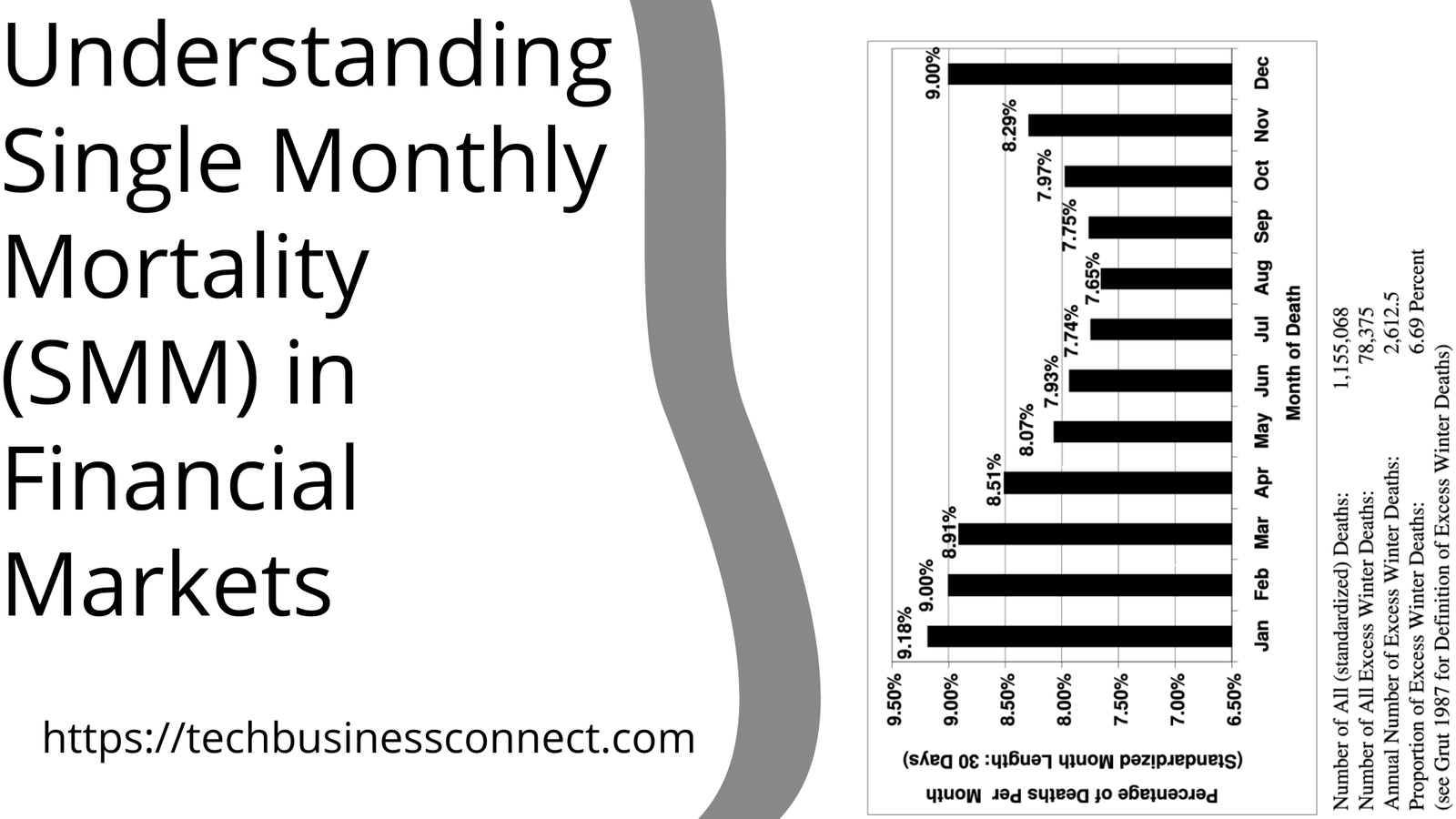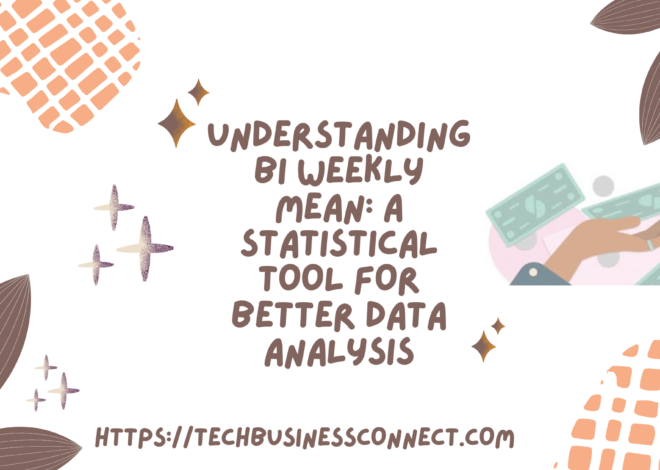
Best Understanding Single Monthly Mortality (SMM) in Financial Markets 2024
Introduction
In the world of finance, especially when dealing with mortgage-backed securities (MBS) and other types of asset-backed securities, it is crucial to understand various metrics that measure the risk and performance of loans. One such key metric is Single Monthly Mortality (SMM). SMM is used to gauge the rate at which a pool of mortgages or loans is being prepaid by borrowers.
Prepayment, in the context of loans and mortgages, refers to the early repayment of a loan, which often occurs when borrowers either refinance their existing loans to take advantage of lower interest rates or sell their homes. These prepayments directly impact the cash flow of mortgage-backed securities, making SMM a critical tool for investors and analysts in understanding prepayment risk.
This article will provide a comprehensive overview of SMM, how it is calculated, its implications for investors, and how it relates to other measures of prepayment risk such as Conditional Prepayment Rate (CPR).
What is Single Monthly Mortality (SMM)?
Single Monthly Mortality (SMM) is a financial metric that represents the percentage of the remaining balance of a loan pool that is prepaid in any given month. More simply, it helps investors assess how much of the total principal of a loan pool is paid off early in a single month. Since mortgage-backed securities often consist of thousands of individual loans bundled together, knowing how much of the principal is repaid prematurely allows investors to predict future cash flows and the longevity of the security.
The Formula for Calculating Single Monthly Mortality
The basic formula for calculating SMM is as follows:SMM=1−(Outstanding Principal at End of MonthOutstanding Principal at Beginning of Month)SMM = 1 – \left( \frac{Outstanding\ Principal\ at\ End\ of\ Month}{Outstanding\ Principal\ at\ Beginning\ of\ Month} \right)SMM=1−(Outstanding Principal at Beginning of MonthOutstanding Principal at End of Month)
Here’s how it works:
- Outstanding Principal at the Beginning of the Month: This refers to the total balance of the mortgage pool at the start of the month.
- Outstanding Principal at the End of the Month: This is the remaining balance at the end of the month after accounting for scheduled principal payments and any prepayments.
By calculating the difference between the beginning and ending balances, we can measure how much principal was prepaid. The result is a percentage that represents the monthly prepayment rate.
An Example of Single Monthly Mortality Calculation
To illustrate how SMM is calculated, let’s consider an example:
Suppose we have a mortgage pool with an outstanding principal of $500,000 at the beginning of the month. At the end of the month, after scheduled payments and prepayments, the balance is $495,000.
Using the formula for SMM:SMM=1−(495,000500,000)=1−0.99=0.01=1%SMM = 1 – \left( \frac{495,000}{500,000} \right) = 1 – 0.99 = 0.01 = 1\%SMM=1−(500,000495,000)=1−0.99=0.01=1%
In this case, the SMM is 1%, meaning that 1% of the mortgage pool’s principal was prepaid in that month.
Why is Single Monthly Mortality Important?
The importance of Single Monthly Mortality lies in its ability to provide insight into prepayment risk. Prepayment risk refers to the uncertainty regarding the timing and amount of principal repayments, particularly when they occur sooner than expected. This is significant for investors in mortgage-backed securities (MBS) because their returns are largely dependent on the interest earned over time. When loans are prepaid, investors receive their principal back earlier than anticipated, which can reduce the overall yield of the investment.
Here are some specific reasons why SMM is a critical measure:
- Cash Flow Predictions: Prepayments reduce the amount of interest income that an investor receives over time. By monitoring SMM, investors can better predict future cash flows and adjust their strategies accordingly.
- Reinvestment Risk: When a loan is prepaid, the investor may be forced to reinvest the returned principal in a lower-interest-rate environment, potentially reducing overall returns. Monitoring SMM helps investors gauge the likelihood of this happening.
- Market Conditions: SMM can provide valuable insights into market conditions. For example, during periods of declining interest rates, prepayments tend to rise as borrowers refinance their loans at lower rates. By keeping track of SMM, investors can anticipate and respond to such changes in the broader economy.
Factors Influencing Single Monthly Mortality
There are several factors that influence prepayment behavior, and consequently, the Single Monthly Mortality rate:
- Interest Rates: One of the most significant drivers of prepayments is interest rate movements. When rates fall, homeowners often refinance their mortgages to take advantage of lower rates, leading to an increase in prepayments.
- Housing Market Conditions: When the housing market is strong, and home prices are rising, borrowers may sell their homes and pay off their mortgages early. Conversely, in a weak housing market, prepayments tend to slow down.
- Economic Environment: A strong economy with low unemployment and rising incomes can lead to higher prepayment rates as borrowers have more disposable income to pay down their mortgages early. On the other hand, economic downturns can reduce prepayments as borrowers may struggle to make their scheduled payments.
- Loan Characteristics: The specific characteristics of a loan, such as its term, interest rate, and whether it has any prepayment penalties, also influence prepayment behavior. For example, adjustable-rate mortgages (ARMs) tend to have higher prepayment rates than fixed-rate mortgages.
Single Monthly Mortality vs. Conditional Prepayment Rate (CPR)
While SMM provides a monthly view of prepayment rates, another commonly used metric in the mortgage industry is the Conditional Prepayment Rate (CPR). CPR is an annualized version of SMM and represents the percentage of the remaining loan balance that is expected to be prepaid over a year, assuming the SMM remains constant throughout the year.
The relationship between SMM and CPR is expressed by the following formula:CPR=1−(1−SMM)12CPR = 1 – (1 – SMM)^{12}CPR=1−(1−SMM)12
This formula annualizes the monthly prepayment rate to provide a more long-term view of prepayment behavior. For instance, if the SMM is 1% (as in the earlier example), the corresponding CPR would be:CPR=1−(1−0.01)12=1−0.887=0.113=11.3%CPR = 1 – (1 – 0.01)^{12} = 1 – 0.887 = 0.113 = 11.3\%CPR=1−(1−0.01)12=1−0.887=0.113=11.3%
This means that if the SMM stays constant at 1%, approximately 11.3% of the loan pool’s remaining balance will be prepaid over the course of a year.
Implications for Investors
For investors in mortgage-backed securities, understanding both SMM and CPR is crucial. A higher SMM or CPR implies a higher rate of prepayments, which may not always be desirable for investors who seek steady cash flow from their investments. In environments with declining interest rates, for example, high SMM or CPR values may indicate that many borrowers are refinancing, leading to early returns of principal and forcing investors to reinvest in potentially lower-yielding securities.
Conversely, in a rising interest rate environment, prepayments tend to slow down, and both SMM and CPR values decrease, which could mean a more stable and predictable stream of cash flows for investors.
Conclusion
Single Monthly Mortality (SMM) is a key metric for assessing prepayment risk in mortgage-backed securities. It allows investors to understand how much of the loan principal is being prepaid each month, which has significant implications for cash flow predictions, reinvestment risk, and overall portfolio performance. By combining SMM with other metrics like CPR, investors can gain a more comprehensive understanding of prepayment behavior and make informed decisions about their investments.
In a dynamic financial environment where interest rates and market conditions are constantly changing, monitoring SMM can provide valuable insights into borrower behavior and help investors navigate the complex world of mortgage-backed securities. Whether you are a seasoned investor or new to the MBS market, understanding the intricacies of prepayment risk and SMM is essential for managing your investment strategy effectively.


